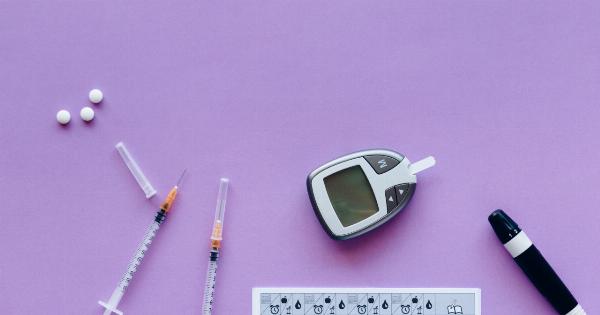Diabetes affects more than 347 million people worldwide and is a leading cause of death and disability globally. It requires constant care and management to avoid life-threatening complications.
Insulin therapy has been the cornerstone of diabetes management. It helps to regulate the blood glucose levels and prevent complications.
However, the traditional insulin delivery methods, such as injections and pumps, can be painful, uncomfortable, and inconvenient for patients.
Fortunately, new insulin patch technology promises to improve the quality of life for diabetics by providing a more comfortable and discreet way of insulin delivery.
What is insulin patch technology?
Insulin patch technology is a new way of insulin delivery that uses a small, wearable patch to deliver insulin through the skin. It is similar to a nicotine patch or a birth control patch.
The insulin is stored in a small, microneedle array that is coated with a bio-compatible adhesive. The patch is applied to the skin, and the microneedles penetrate the top layer of skin to deliver the insulin to the bloodstream.
The insulin patch technology eliminates the need for injections and pumps, which can be painful, uncomfortable, and inconvenient for patients.
It also provides a more discrete way of insulin delivery, which is a significant benefit for patients who feel self-conscious about managing their diabetes in public.
How does insulin patch technology work?
The insulin patch technology works by delivering insulin through the skin using microneedles. The microneedles are tiny, hollow needles that are less than 1mm in length and are made of a biodegradable polymer or metal.
The microneedles penetrate the top layer of skin, which is the stratum corneum, and reach the epidermis, where they deliver the insulin to the bloodstream.
The microneedles are designed to dissolve after use, leaving behind only a small patch that can be easily removed and disposed of.
The insulin patch technology uses a controlled-release mechanism to ensure that the insulin is released slowly and steadily over a prolonged period. This helps to keep the blood glucose levels stable and avoid hypoglycemia.
What are the benefits of insulin patch technology?
The insulin patch technology has several benefits over the traditional insulin delivery methods:.
1. Convenience
The insulin patch technology is more convenient than injections and pumps because it requires no preparation or special equipment.
Patients can wear the patch discreetly under their clothing and carry on with their daily activities without interruption.
2. Comfort
The insulin patch technology is more comfortable than injections and pumps because it does not require needles or tubes to be inserted into the skin. Patients may barely notice that they are wearing the patch.
3. Safety
The insulin patch technology is safe because it eliminates the risk of needlestick injuries and infections associated with injections and pumps.
The microneedles used in the patch are designed to penetrate only the top layer of skin, which is less invasive than injections and pumps.
4. Accuracy
The insulin patch technology is more accurate than injections and pumps because it uses a controlled-release mechanism to deliver insulin slowly and steadily over a prolonged period.
This helps to keep the blood glucose levels stable and avoid hypoglycemia.
What are the drawbacks of insulin patch technology?
The insulin patch technology has some limitations and drawbacks that need to be considered:.
1. Cost
The insulin patch technology is more expensive than injections and pumps because of the manufacturing and materials used. This may limit its accessibility and affordability for some patients.
2. Adherence
The insulin patch technology requires strict adherence to application and removal instructions to ensure that it works correctly. Failure to follow the instructions may result in inadequate insulin delivery and poor blood glucose control.
3. Skin sensitivity
The insulin patch technology may cause skin irritation or allergic reactions in some patients due to the adhesive or microneedles. Patients with sensitive skin or allergies should consult their healthcare provider before using the patch.
4. Dose flexibility
The insulin patch technology may not be suitable for patients who require variable insulin doses or adjustments, as the patch delivers a fixed amount of insulin over a fixed period.
Conclusion
The insulin patch technology is a promising new way of insulin delivery that offers several benefits over the traditional insulin delivery methods.
It is more convenient, comfortable, safe, and accurate than injections and pumps, and may improve the quality of life for diabetics.
However, the insulin patch technology also has some limitations and drawbacks that need to be considered. Patients should consult their healthcare provider to determine if the patch is suitable for their individual needs and circumstances.































